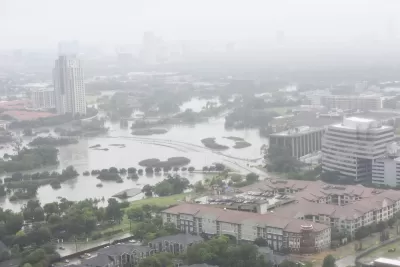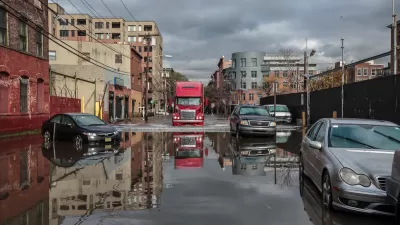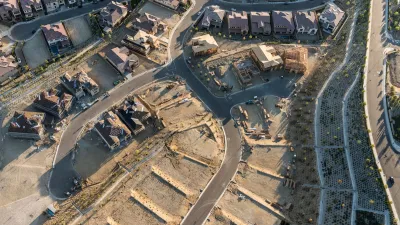Wishing Houstonians continued strength, fortitude, and safe passage this week, Hazel Borys considers resilience.

"Most of us faraway bystanders are observing Houston’s response to Hurricane Harvey with concern at the devastation as well as encouragement at the stories of compassion. With sympathy to the current human suffering from Harvey, we are wishing Houstonians continued strength, fortitude, and safe passage this week. No amount of comprehensive planning or zoning reform can prepare a city for the sort of flood Houston is currently experiencing. An expected 50” of rain in a few days makes this an event that no place in the world is likely to sustain without massive personal and economic impacts. Perhaps not even the Netherlands, who has led the world in stormwater management for hundreds of years, with protection, prevention, and preparedness."
"This volume is more rainfall in 3 days than annual amounts in very wet regions. The rainiest cities in the U.S. – Mobile, Pensacola, and New Orleans – average 67”, 65” and 64” of rain per year. Portland and Seattle average 36” and 37”. 50” in a few days is highly unusual in hurricane history, and is perhaps a 1,000-year flood. That means that there is a 1 in 1,000 chance of it happening in any given year, and not that we should only expect an event of this magnitude every 1,000 years, an important but counterintuitive distinction. Regardless of what kind of planning Houston would’ve done, preparation for this intensity is a challenge."
"A good deal of brilliance has been shone on how climate change is – and is not – involved in progressively more extreme storm events, like this piece by David Roberts. Clearly, we must both adapt and mitigate climate effects as quickly as we can. It is becoming increasingly clear that adaptation and mitigation isn’t an either/or choice."
Borys shares short interviews with two planning gurus, Ben Brown and Scott Bernstein, and points to a number of resources that may help us with our global commons problem.
FULL STORY: Hurricane Harvey provides a sober reminder that resilience is about mitigation and adaptation

Planetizen Federal Action Tracker
A weekly monitor of how Trump’s orders and actions are impacting planners and planning in America.

Maui's Vacation Rental Debate Turns Ugly
Verbal attacks, misinformation campaigns and fistfights plague a high-stakes debate to convert thousands of vacation rentals into long-term housing.

Cuomo Is the Candidate of Both NIMBYs and Developers. What Gives?
In the New York City mayoral race, odd bedfellows align to preserve the housing status quo.

Amtrak Rolls Out New Orleans to Alabama “Mardi Gras” Train
The new service will operate morning and evening departures between Mobile and New Orleans.

The Subversive Car-Free Guide to Trump's Great American Road Trip
Car-free ways to access Chicagoland’s best tourist attractions.

San Antonio and Austin are Fusing Into one Massive Megaregion
The region spanning the two central Texas cities is growing fast, posing challenges for local infrastructure and water supplies.
Urban Design for Planners 1: Software Tools
This six-course series explores essential urban design concepts using open source software and equips planners with the tools they need to participate fully in the urban design process.
Planning for Universal Design
Learn the tools for implementing Universal Design in planning regulations.
Heyer Gruel & Associates PA
JM Goldson LLC
Custer County Colorado
City of Camden Redevelopment Agency
City of Astoria
Transportation Research & Education Center (TREC) at Portland State University
Jefferson Parish Government
Camden Redevelopment Agency
City of Claremont




























